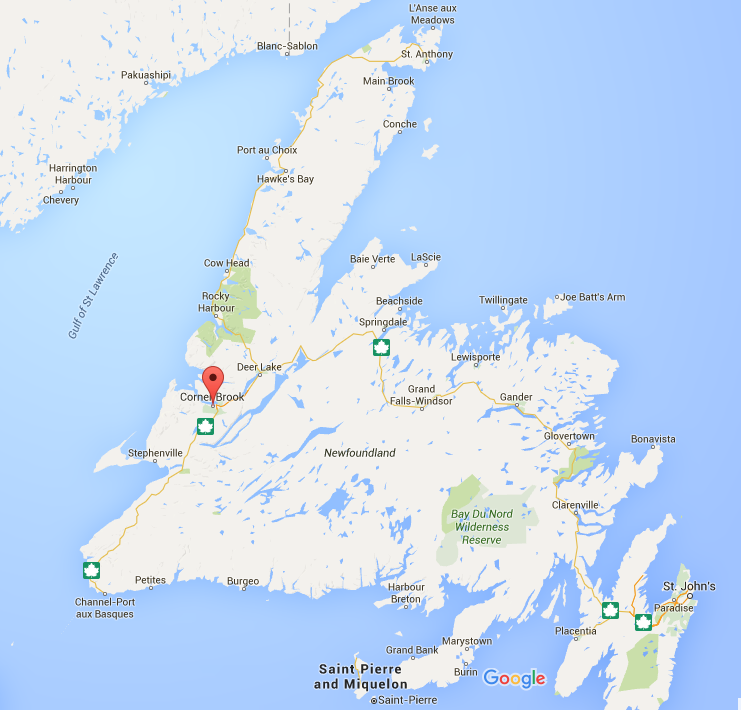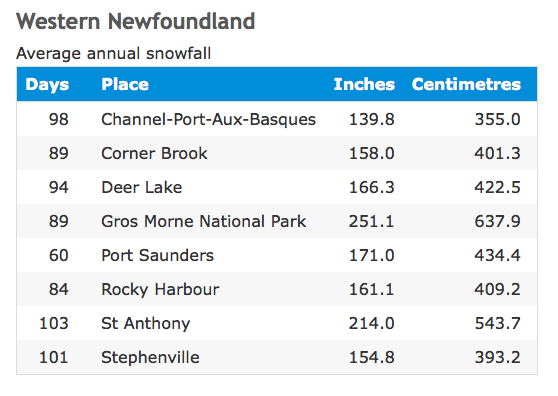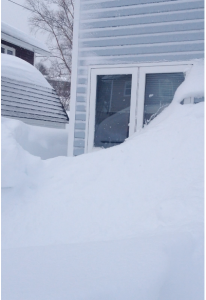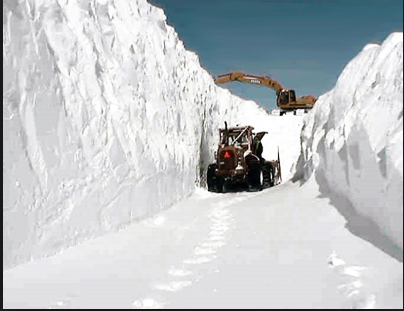Weather in Newfoundland is always a popular topic. When I am guiding travellers in the summer, I often get asked about the winter, what is it like and the number one question is always about the weather.
I check the weather everyday, sometimes multiple times a day on Environment Canada plus I follow #nlwx on twitter, and I listen to CBC radio. Everyone wants to know whats going to happen, when it will happen and when it comes to snow, how much will fall, and the wind, is it gonna blow a gale?
First things first, a small geography lesson because the island is big. I live on the west coast (in Corner Brook), which is about 700kms from the east coast (St.John’s), and 400kms away from the tip of the northern peninsula (St.Anthony).

I often find that people hear so much about St. John’s weather (the rainy, slushy, foggy stuff) that they tend to apply it to the whole island. Being 700kms away from St. John’s, closer to the mainland and away form the Labrador current (Iceberg Alley) gives us WAY better weather! Well, ok, WAY better is still subject to interpretation, but if you prefer less fog and more snow then WAY better means, WAY, WAY better.
Winter (for me anyways) begins in late October or early November. This is the time of year when it is grey, wet and cold. No fog out here but dreary none the less. Western Newfoundland doesn’t usually see any permanent snow until late December or even early January because that’s when it actually stays below freezing and the winter storms begin. But this is when we all start to get antsy, preform snow dances and fine tune our winter gear – get on with it!
Winter weather on the west coast certainly isn’t a walk in the park, but it can help you enjoy the best of the park because of all the snow! The west coast averages 400 cms or 12 feet of snow in just 89 days (about 3 months). Gros Morne National Park however, averages even more, another 200 cms, totalling 18 feet! If you like powder for your winter activity of choice, come in February. This is why we all ski, snowshoe, and snowmobile eh b’yes?!

Western Newfoundland gets that much snow because it’s NOT that cold! Not as cold as you would think because Newfoundland is subject to a maritime temperate climate. The coldest I have experienced here in Corner Brook is -25C maybe -30C, and that’s with the wind, in late February. It’s very uncommon for days that cold but if I remember correctly, there was a polar vortex involved for this one. I used to live in Ontario where January and February were spent in -20C to -40C temps so I consider the west coasts -3C to -10C average range pretty balmy and perfect for winter adventures.

Is it windy in the winter? Heck ya! But it’s windy on the island all the time, this time of year we just experience higher wind speeds from storms that come up from the south. I love listening to the CBC Corner Brook Morning Show and hearing Brian read out the wind speeds when a blizzard is enroute. It’s pretty common to hear “gusting to 70-80km/hr” when some weather is blown’ in but from time to time, the south west coast get’s the “gusting up to 120km/hr in the Wreckhouse!” warning. “Blowing Snow” advisories are common and worth heeding because visibility is usually reduced to nothing and drifting gets really bad on exposed sections of roads and highways. Drifting also makes for lots of shovelling. To the right is my dining room window, which is about eight feet off the ground, with the window being three feet making this drift about eleven feet high!
As for frequency of wild wind and snow dumps, we get a storm about once a week during those 89 days spanning mid-December to mid-March. This can make travelling to the Rock challenging in winter. Everyone has story of a flight delay or ferry cancellation paired with how wild the ride was once services began to run again. In 2012, Mike and I had travelled home to Ontario for the holidays. As we drove across Nova Scotia on our return, the wind was wild so it was just us and transports on the road. Once in Sydney, we got the message that all ferry crossings were cancelled. After two nights in a hotel, the storm had passed and we were on the first boat to Port aux Basques. Let’s just say, I will never go first again! Although the winds had died down, the ocean was still heaving from the storm and it was nothing short of terrifying for a mainlander. Since then, we have flown back in the winter many times and (knock on wood) have yet to experience any delays.
Once March rolls around, the snow is all down and the blue birds days of spring are here. This is the best time for winter activities in my opinion because the days are longer and getting warmer, there is lots of snow and you can see the sun!
Although Newfoundland’s winter weather can be extreme at times and change quickly, for the majority of the winter it is exactly what winter should be; snowy, chilly and absolutely beautiful!
I love the on going conversations about the weather, how it connects us in our constant struggle for balance between shovelling and playing. Perhaps I have a sick sense of humour, but I love how extreme Newfoundland’s weather can be at times. I mean, when have you seen this where you live?




